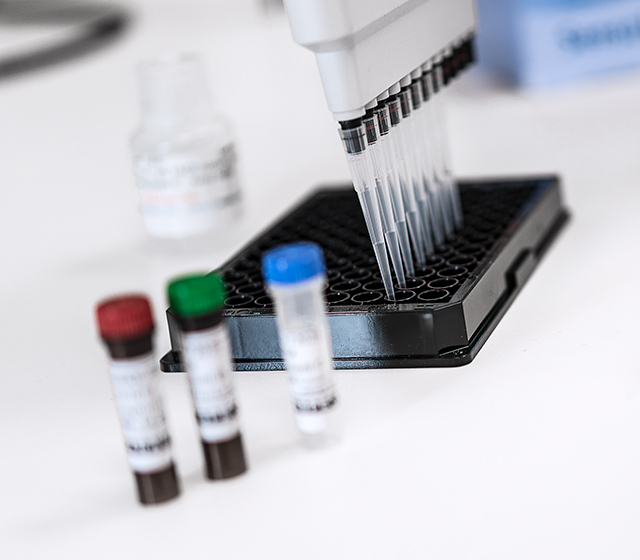Viral & bacterial Proteases
Bacterial Sortase A Activity Assay Kit
Many types of bacteria adhere to host extracellular matrix proteins as a fundamental first step toward the pathogenesis of infection. The cell wall envelope of Gram-positive bacterial pathogens is coated with surface proteins that interact with human host tissues. These proteins are anchored to the bacterial cell wall by a mechanism requiring a C-terminal sorting signal with a conserved LPXTG motif.
Sortase A, a transpeptidase, cleaves the sorting signal between the threonine and the glycine of this motif. Sortase A enzyme from S. aureus is the prototypical member of the sortase enzyme family. Since the sortase-catalyzed anchoring reaction is essential for the virulence of a big number of bacterial pathogens, the use of Sortase A Activity Assay kit may enable the development of sortase inhibitors and new anti-infective drugs.
AnaSpec’s SensoLyte® Viral and Bacterial protease activity assay kits are ideal for High Throughput Screening in continuous assay of proteases activity, protease inhibitors and inducers using proprietary substrates. Our company continuously expands the selection of assays that employ FRET and other technologies.
Essential viral proteases
AnaSpec offers a selection of SensoLyte® assay kits for the detection of viral proteases.
SARS-CoV-2 Proteases
The SARS-CoV-2 3CL Protease and Papain-like Protease (PLpro) Activity Assay Kits employ fluorescence FRET peptide substrates for the measurement of the enzyme’s activities.
SARS-CoV-2 infection starts when viral particles bind to host surface cellular receptors, subsequently coronavirus expresses and replicates genomic RNA to create full-length copies that are integrated into newly produced viral particles. 3CL protease is essential for processing the polyproteins that are translated from the viral RNA. It is the main protease found in coronaviruses. Papain-like Protease (PLpro) is fundamental for viral replication. Both proteases are considered targets for the coronavirus inhibitors and antiviral drugs development.
HIV and HCV Proteases
The importance of HIV and HCV proteases in drug discovery is well documented as they are essential for the infection and replication of these viruses.
HIV-1 protease, a retroviral aspartyl protease, is an essential enzyme for viral particle maturation. Without effective HIV protease, HIV virions remain none-infectious. Consequently, it serves as a therapeutic target in successful antiviral therapy.
HCV protease is identified as an important drug-screening target. NS3/4A protease is essential for the virus life cycle. It is responsible for cleavage of the HCV polyprotein at four sites and is fundamental for viral replication. NS3/4A protease has been considered as one of the most attractive targets for developing novel anti-HCV therapies.
Our SensoLyte® Protease Assay Kits may facilitate screening for novel viral protease inhibitors.
FRET substrates
FRET occurs between a peptide tagged to a donor and an acceptor when placed within 10-100Å of each other resulting in the donor’s excitation fluorescence to be quenched by the acceptor. Enzymatic hydrolysis of the peptide results in recovery of the donor fluorescence following spatial separation of the donor and acceptor upon energy transfer.
| Dye (donor) | Quencher (acceptor) | Donor Ex/Em | |
| SensoLyte® 390 | Mca | Dnp |
•
325/393 nm |
|---|---|---|---|
| SensoLyte® 490 | EDANS | DABCYL |
•
340/490 nm |
| SensoLyte® 520 | 5-FAM or HiLyte™ Fluor 488 | QXL®520 |
•
494/521 nm |
| SensoLyte® 570 | 5-TAMRA | QXL®570 |
•
547/574 nm |
Fluorogenic substrates
These substrates do not require a quencher and contain a C-terminal dye that does not fluoresce until it is cleaved from the peptide (fluorescent form of dye is released).
| Dye (donor) | Donor Ex/Em | |
| SensoLyte® AMC | AMC |
•
351/430 nm |
|---|---|---|
| SensoLyte® AFC | AFC |
•
382/480 nm |
| SensoLyte® Rh110 | Rh110 |
•
501/527 nm |
